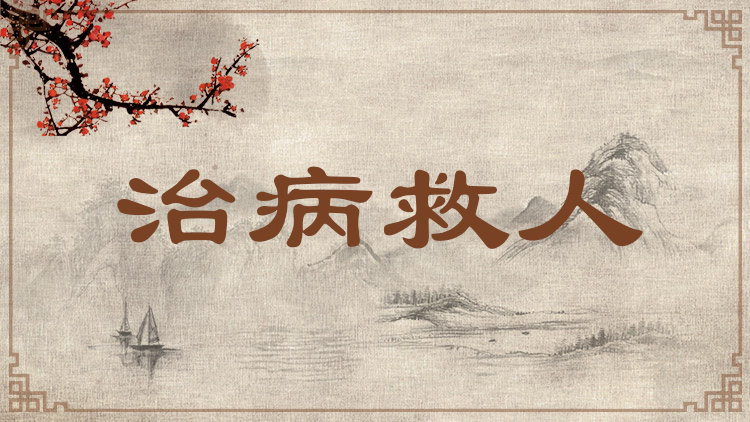治病救人 Treat the Illness and Save the Patient

治疗疾病,挽救生命。使人摆脱危险和痛苦、恢复健康,这是医疗的本质属性,也是医者崇尚的宗旨或理念,体现了医者尊重人的生命的悲悯情怀和人文精神。现在也多用来比喻针对人的缺点或错误进行批评或处分,促使其克服缺点、改正错误。批评或处分只是手段,而且对事不对人,目的是要把有缺点或错误的人拉回正确的轨道上来。这体现了在对待他人缺点、错误方面,坚持原则与宽以待人精神的有机统一,与“爱人以德”不无渊源。
Ridding people of danger and suffering and enabling them to recover their health is the essential nature of medical treatment. It is also the noble aspiration or ideal of the physician, and it exemplifies the physician's compassionate respect for human life and the humanistic spirit. This expression is now also used as an analogy in pointing out someone's shortcomings or mistakes when criticizing or penalizing them, to enable them to overcome their shortcomings and correct their mistakes. Criticisms or penalties are merely measures taken to help someone; they target the behavior and not the person, and the goal is to bring someone with shortcomings or mistakes back onto the right path. This demonstrates the organic unity of firmly adhering to principles while showing leniency towards the person, and it is related to the concept "loving the people in accordance with rules of moral conduct."
引例 Citation:
◎沈羲,吴郡人,学道于蜀,能治病救人,甚有恩德。(《太平御览·道部四·天仙》)
沈羲,吴郡人,在蜀地学得道术,能够治病救人,医德和口碑都非常好。
Shen Xi was a native of Wu Prefecture. Having learned Daoist practices in Sichuan, he could treat illnesses and save people, and had excellent medical ethics and reputation. (Imperial Reader for Emperor Taizong of the Song Dynasty)
推荐:教育部 国家语委
供稿:北京外国语大学 外语教学与研究出版社
责任编辑:刘怿莎





